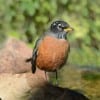 By Jim Stevenson
By Jim Stevenson
First, many apologies, as I clicked on the wrong species in my Gallery Friday. Arrgghh! The “Wilson’s” Plover I inadvertently put in the Gallery was a Snowy. Sorry for my carelessness. Folks, I would like to say “farewell” to someone very instrumental in the rebirth of birding here in Galveston. Gordon Nunn has been with the “birding movement” since around when I arrived in 1995 and was on my committee to identify sites for the Great Coastal Birding Trail. He has done everything from building bird boxes to serving in Galveston County Audubon, and a lot more! Thank you, Gordon, for all you’ve done!
Birds of Galveston should be completed Monday (hopefully!) when we receive the reviews for four kind volunteers (at least, I *hope* they’re kind!). I’ll begin taking orders next week.
Lastly, we really (REALLY!) need for those who owe for the calendar sale (14 people) to send in their checks. Like now.
OK, the Gallery is on many of the woodland birds from October and early November. Enjoy!
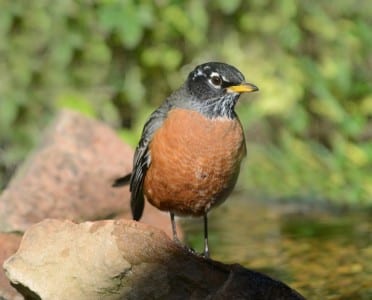
Robins are widespread over most of North America, even having been seen to the Arctic Ocean. This is a male, and I’ve seen several through the years with aberrant white on the head. They resemble the robin of Europe somewhat – familiar to many from England – but they are from two different families (thrushes and flycatchers).
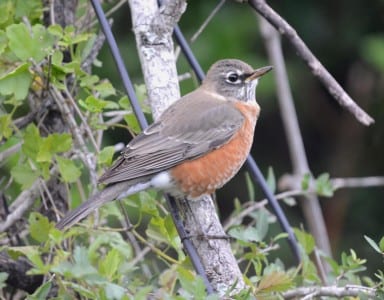
Female robins are paler than males, and they and bluebirds have the only sexual dimorphism in our thrushes. Amazingly, some robins which have been dissected, such as in Fairbanks, Alaska, have had the opposite plumage from their gonads. This kind of “cross-dressing” is very unusual in birds.
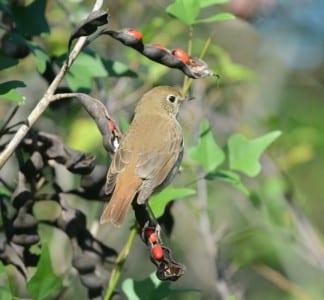
Most thrushes are subtly-colored, with browns above and speckles below. The reddish tail easily identifies this one as a Hermit Thrush, a winter resident all over the southern United States. They are known for flicking their tail up, and issuing a soft “chuck” back in the woods. They are our only brown, spotted thrush in winter.
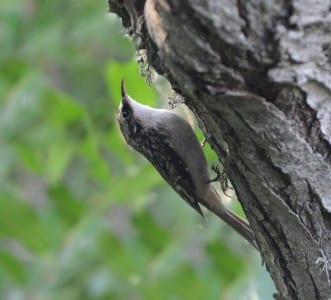
Brown Creepers are rare on Galveston, only showing up in late fall, and not every year. Do you know the other two species with this status? One is the Red-breasted Nuthatch, which had a proverbial invasion last fall (2012). Do you know what the third of that bunch is? Stay tuned!
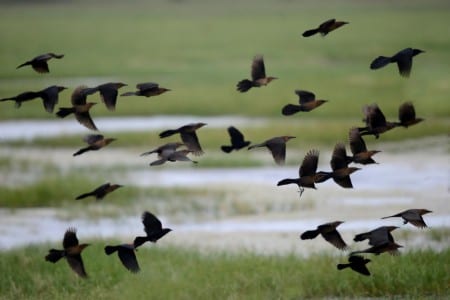
Late fall, many of our birds begin to flock, even though they don’t all migrate. These are Boat-tailed Grackles, largely females and immatures, flocking at Brazoria NWR. These and great-tails are similar, but boat-tails are more richly colored than GT. BTs are more often in marshes, fresh and salt. Did you notice the two red-wings there?
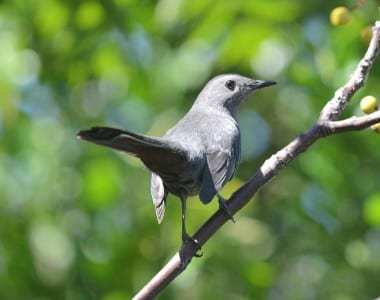
Mimic thrushes make a lot of varied calls, although catbirds are vey poor mimickers. The catbird is famous for the cat-like meows, but they have a variety of unique notes, in fall, especially. If the light were better you could see the reddish under tail coverts, and you can only barely make out the dark cap.
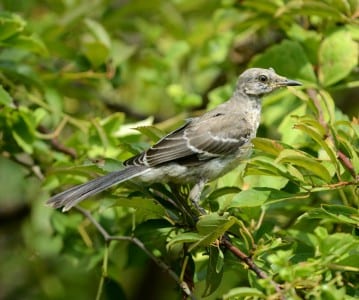
Nothing’s more homely than a juvenile mockingbird, unless it’s two. They wear a thrushlike spotted chest and ragged feathers elsewhere. These and cardinals are State Birds in six states, and coming from Florida, I have always had this species as my symbol. They are not an especially northern bird but there are several other species in the Tropics.
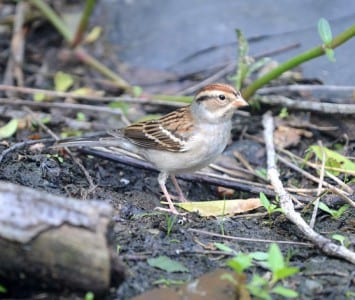
Many sparrows have streaked chests & many don’t, and chippies are one of the latter. They look odd in winter without their red cap but this species isn’t very common on the UTC anytime (a little like Song Sparrows). They are usually seen in small flocks, flitting off the roadsides with oncoming traffic.
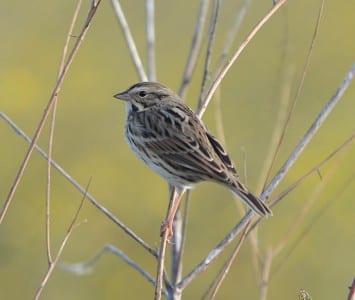
Savannah Sparrows are totally abundant sparrows, heavily streaked and out in the open areas (like most sparrows). Some races we get are dark and some are lighter but they all basically look the same. They have no white in the tail nor strong head markings, so they are quite a plain sparrow – with streaks.
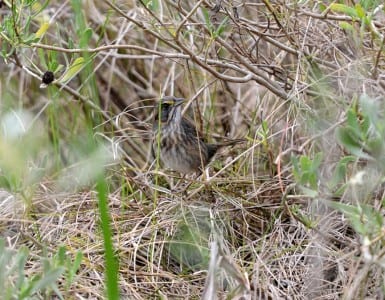
Hiding in salt marshes is the Seaside Sparrow, a large, dark species mostly of Juncas and Spartina. They have longer bills than most sparrows, eating more insects and (having access to) fewer seeds in the salt marshes. They are often seen in concert with Nelson’s Sparrows, the winter resident from Inland North America.
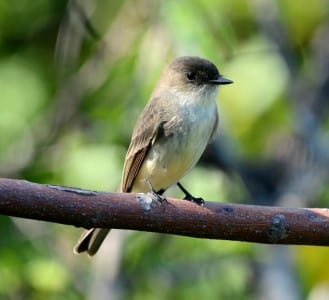
Eastern Phoebes are normally our only wintering flycatcher, and are easily identified by their large head and emphatic tail-bobbing. Phoebes are partial to areas with freshwater, perhaps because they find more flying insects there. This particular bird is an immature, sporting a little extra yellowish on the belly.
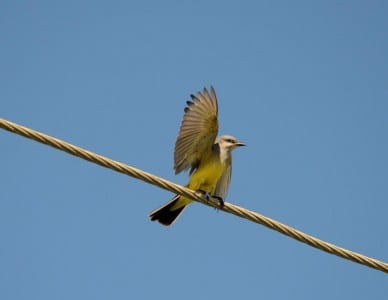
Returning home with Richard Mayfield the other day, we had to go photograph this Western Kingbird waving at us. Who knew? You can easily see why it’s a Western and not a Couch’s or Tropical: It has a black tail with white outer tail feathers. Also, it has more gray on the upper chest than the other two.
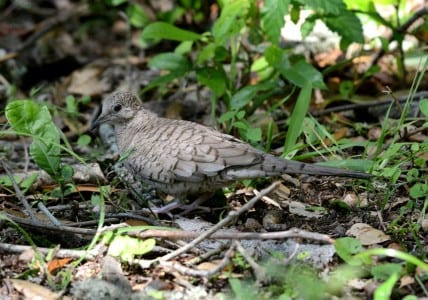
Inca Doves have really disappeared in recent years, due to cats, cars and probably other issues. You can see the scaly back, not found on Ground Doves, as well as the longish tail. They both have reddish in their wings. And sadly, both have declined sharply in recent years, joining an increasingly long list of birds in trouble.
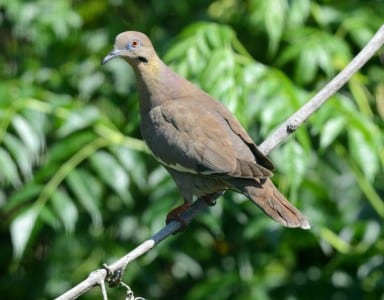
White-winged Doves are large, very southern doves, coming up from Mexico with a vengeance. Like other doves, they have some iridescence, such as he gold wash on the neck, plus some ornamental bare skin around the eye. And the eye ain’t bad, either! I keep wishing we could trade a ton of white-wings for a ton of Inca and ground doves.
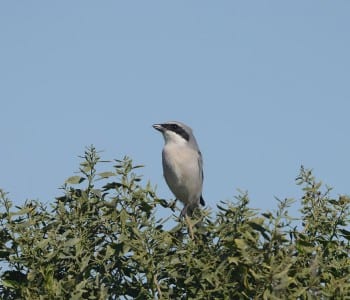
Loggerhead Shrikes are wicked hunters and this one is showing you his hooked beak. The black mask is typical of many predators, used to hide the eye. Think about other predators like pit vipers, Raccoons and the Lone Ranger. The Northern Shrike is to the north of us and is not a possibility in our area. And there is no third shrike in America coz birding ain’t baseball.
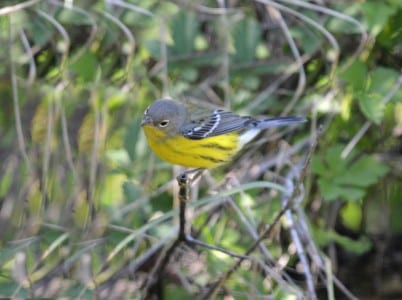
Magnolia Warblers can be early and late migrants, a bit like redstarts. They look a bit like the very early Canada Warbler, but are more common. These are one of several midelevation warblers, usually seen from about five feet to maybe fifteen. Those kinds of characteristics won’t ID a bird for you, but they might catch you in an error.
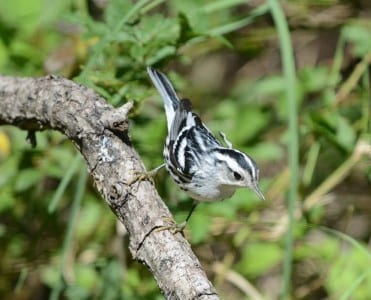
And the other warbler that can be early or late (even as ear ly as late July!) is the Blackand- White. This is a female, with the white throat, working the bark for insects. The color matches the bark, a phenomenon called cryptic coloration. Also, notice the long bill, good for probing into the crevices in bark.
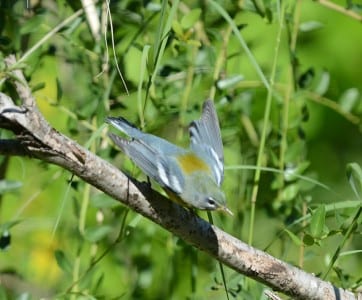
Northern Parulas are mostly southern breeders, although there is a small breeding population in Canada that migrates later. Parulas are basically blue with white wingbars, plus some yellow on the chest. Their greenish back is reminiscent of scrub-jays and the white “eye-lids” look a bit like MacGillivray’s Warbler. It’s also one of our smallest warblers.
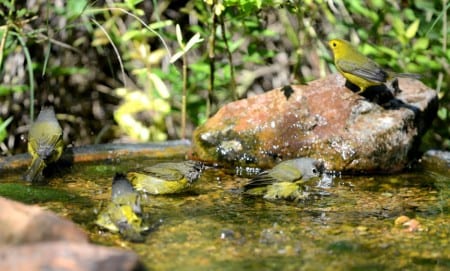
Nashville Warblers can be abundant in late fall, with the female Wilson’s watching. These two species are the two abundant fall warblers once Yellow Warblers clear out early. These also love to bathe in drips as much as any species I know. Curiously, these two are scarce on the Coast in spring, as they take an inland route north.
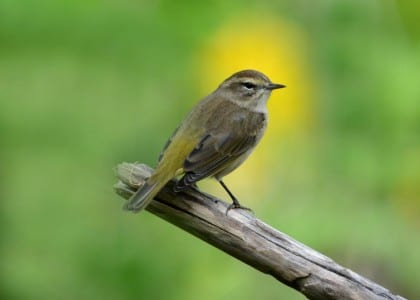
Palm Warblers are eastern birds that winter sparingly in Texas in fields like Indian Beach and Anahuac NWR. They and Prairie Warblers (also eastern) bob their tails frequently, making identification much easier. Palms are one of the few songbirds whose races are easily separated, with the Northern (Yellow) much yellower than the Westerns we have.Palm Warblers are eastern birds that winter sparingly in Texas in fields like Indian Beach and Anahuac NWR. They and Prairie Warblers (also eastern) bob their tails frequently, making identification much easier. Palms are one of the few songbirds whose races are easily separated, with the Northern (Yellow) much yellower than the Westerns we have.Palm Warblers are eastern birds that winter sparingly in Texas in fields like Indian Beach and Anahuac NWR. They and Prairie Warblers (also eastern) bob their tails frequently, making identification much easier. Palms are one of the few songbirds whose races are easily separated, with the Northern (Yellow) much yellower than the Westerns we have.
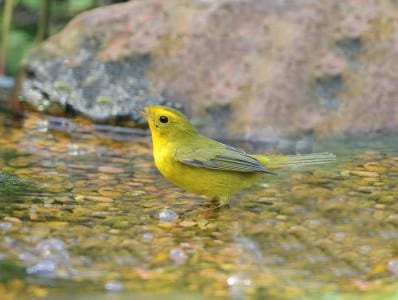
Here is a good look at a female Wilson’s, with just a hint of a yellow eyestripe (absent in Yellow Warblers). They are occasionally seen (or heard!) wintering in the area, such as in the Privitt (I can’t spell that shrub!) around Brazos Bend State Park. Their call is a delicious “kissing” sound, quite unique and unlike other warblers.
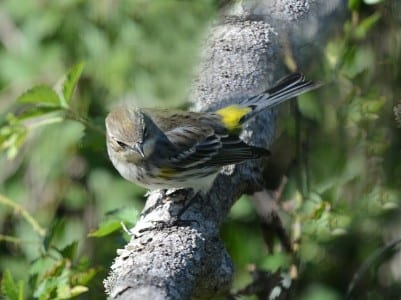
The real elephant in the room is the Yellow-rumped Warbler, an abundant winter resident all over the southern United States. The yellow rump is conspicuous but also notice the yellow cap and smudge on the side of the breast. They are most easily found by their hollow chip, really not like any other warbler.
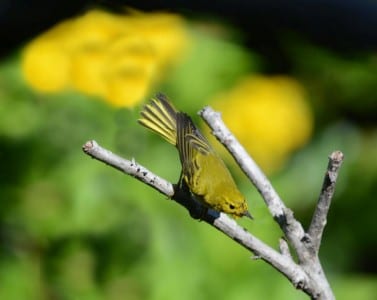
From early October, a Yellow Warbler passes through later than normal. Notice the yellow flashes in the tail, normally white in most warblers. This is a very widespread member of its family, even into the tropics, like the Galapagos. Of course the ones there are garnet and gold, a certain mascot for the Florida State Seminoles!
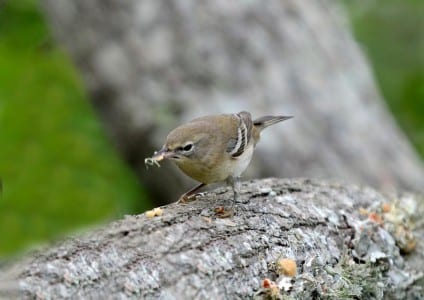
OK you great birders, what species is it? Brownish warbler, large size and big bill, white wingbars, white eyering. Do you know this bird? Last chance…
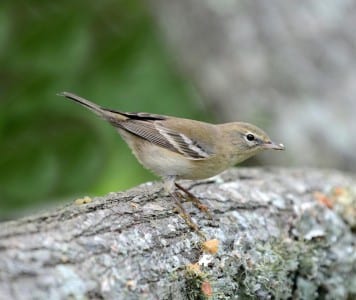
Rare on Galveston, visiting on very occasional late fall cold fronts, like which other two species? Yup, Red-breasted Nuthatch and Brown Creeper. Not pretty, but pretty neat. So it is… Good! A female Pine Warbler! They are very common in the Eastern United States, and normally in pines, but a very uncommon visitor to most islands in the Gulf Coast.

 Posted in
Posted in 























